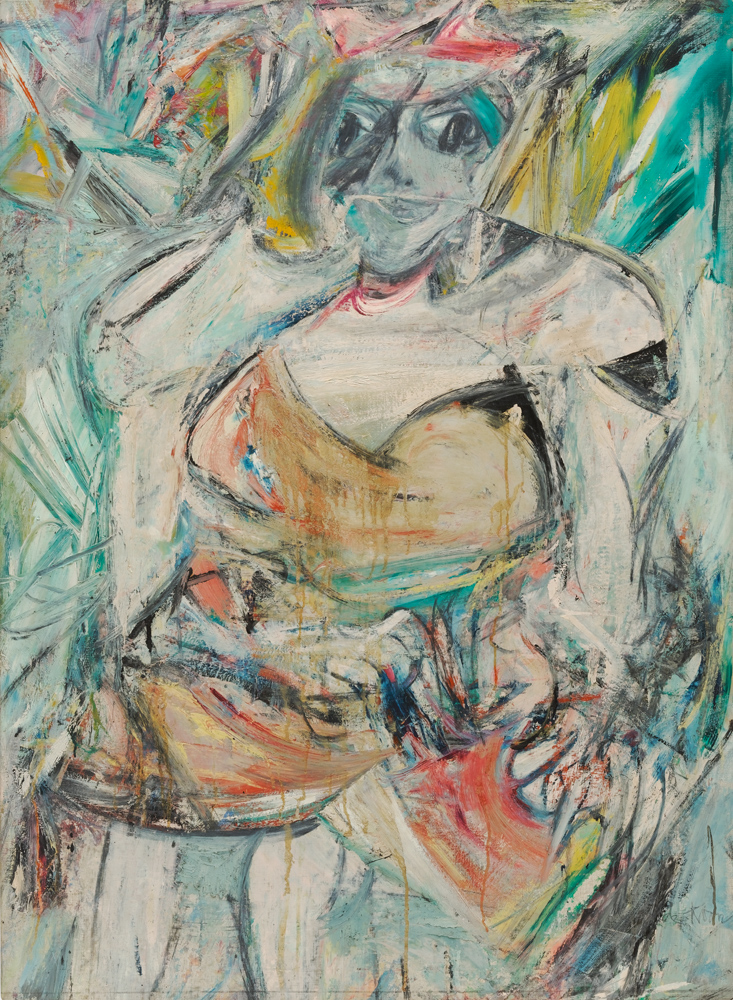Woman II (1952)
The use of charcoal can be seen on the far left side of the canvas, where chunks of the charcoal are literally embedded into the paint. This is a result of his having drawn directly onto the canvas with the charcoal while the paint was still wet—possibly also experimenting with a new composition for the canvas, or parts of the composition for the canvas. The charcoal bits that can be seen on that far left side also echo a painting strategy that he had used in his paintings from the 1940s, where he was mixing crusty, dry materials like plaster of Paris and quartz directly into his paints to get a very matte kind of surface. And the charcoal functions much the same way here in Woman II.
A major retrospective of his paintings has opened at the Museum of Modern Art in New York, along with a special exhibition website. Even if you don't like his art, do read the sections about his working methods and materials. For instance, you'll discover he experimented with cooking oil as a medium, drew with charcoal into wet paint, and pinned drawings to a painting to rework a composition.
• MoMa 2011 De Kooning Exhibition website
• ArtInfo Interview with Exhibition Curator John Elderfield
fonte:http://painting.about.com/b/2011/09/18/de-kooning-painted-with-cooking-oils.htm?nl=1

Nenhum comentário:
Postar um comentário